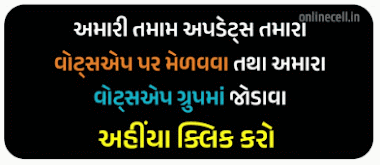If you are trading without looking at price charts, you are just shooting in the dark. Price and Volume are the two most important inputs for technical analysis. They form the basis of all technical analysis. Price charts help to analyze price and volume data in visual form.
A Candlestick chart is the most popular form of price chart used by traders. In a candlestick chart, the price graph is represented in the form of a series of candles, hence it is called a candlestick chart.
Candlestick chart conveys useful information like the trend, bullishness/bearishness, volume at a simple glance.
The chart is made up of red and green candles where each candle gives information about opening, closing and range of trading prices within a particular time frame.
Even if you are not a trader but a long-term stock investor you should have knowledge about the candlestick charts. Because no news or other internet sources will give you more useful information about a stock than its price chart.
You can understand the trend of a particular stock and also find an appropriate entry/exit point by reading candlestick charts.
What are Candlestick Chart Patterns
Candlestick charts are made up of red and green candles.
Each candle represents the range of prices during a particular time period. In a 5-min candlestick chart, each candlestick represents a 5 min period; in a 10 min candlestick chart, each candlestick represents a 10 min period and so on.
Green Candles represent that the closing price at the end of the time period is higher than the opening price.
Red candles represent that the closing price at the end of the time period is lower than the opening price.
Let’s say you open a 10-min candlestick chart of stock at 9.30 am when the price is Rs. 230. If the price goes up and ends up at Rs. 233 at 9.40 am, the candle formed will be a green candle.
Candle body – The highlighted portion (green or red) is the body of the candle which denotes the opening and closing price. So, the lower end of the body is the closing price in a red candle and the upper end of the body is the opening price.
Similarly, the lower end of the body in a green candle is the opening price and the upper end of the body is the closing price.
Candlewick – the upper shadow and the lower shadow represent the wick of the candle. The wick of the candle denotes the range of prices at which the stock has traded in that time duration.
For example, if the price had gone up to Rs. 234 and gone down to Rs. 225 in the 10 minutes, the length of the candle wick would have been from 225 to 234. And the body formed will be in the price range of Rs 230 & 233.
24 Candlestick Patterns to Learn for Intraday Trading
If you have read and understood the article so far, interpreting candlestick patterns will be a cakewalk for you. There are many candlestick patterns. We will be covering some common candlestick patterns that you can learn to start intraday trading in this article.
#1. Hammer Candlestick
A Hammer is a bullish signal, consisting of a short upper body and longer lower wick. It indicates that the prices bounced back even after selling pressure. Thus, a hammer at the bottom of a downtrend indicates that the trend has changed to bullish.
Both red or green hammers are bullish indicators but green hammers are stronger bullish indicators because it means that the buyers are gaining control.
#2. Hanging Man
A hammer formation at the top of an uptrend is called a Hanging Man and is a bearish signal indicating the end of the uptrend. The long lower wick indicates that the buyers have tried to keep the prices up but the sellers are gaining control.
As you can see in the adjoining image, there is a downtrend reversal after the hanging man formation.
#3. Inverted Hammer
An inverted hammer at the bottom of a downtrend is a bullish trend reversal signal. It indicates that the buyers were able to resist selling pressure as sellers were not able to take the price down much.
If there is a green candle after the inverted hammer, it would give further confirmation of a trend reversal.
#4. Shooting Star
The inverted hammer formation at the top of an uptrend is called a shooting star. It is a bearish trend reversal signal. The long upper wick indicates that the buyers were not able to take the prices up, as sellers are gaining control.
If there is a red candle after the shooting star, it would give further confirmation of a trend reversal.
#5. Spinning Top
A spinning top is indicated by a short body candle with a long upper and lower wick. This candle indicates that neither the buyers or sellers could gain control and hence, the opening price and closing price were close to each other.
A spinning top shows indecision and might be a neutral candlestick indicating a pause in the trend or a continuation.
#6. Bullish Spinning Top
A spinning top at the bottom of a downtrend could indicate a potential trend reversal. If there is a spinning top after a continuous downtrend and the candle after the spinning top is a green candle, it may be a sign of trend reversal.
#7. Bearish Spinning Top
A spinning top at the top of an uptrend could indicate a potential trend reversal. If there is a spinning top after a continuous uptrend and the candle after the spinning top is a red candle, it may be a sign of trend reversal.
#8. Doji Candlestick Pattern
The Doji is formed when the opening and closing price of a candle is almost the same. Thus, the candle looks like a ‘+’ sign. The Doji might be a red or green candle, representing indecision in the market, i.e. neither the buyers or sellers are in control.
A Doji formation at the top or bottom of a trend generally indicates a trend reversal. To better understand it, look at the above image. Each green candle is clearly showing that the buyers are taking the price higher.
But then there is a Doji, where the buyers have been unable to take the price higher like in the previous green candles, which signals that the sellers have come in action. Thus, prices have come down following this Doji.
A Doji can also sometimes be a neutral sign indicating pause or pullback in a trending market.
#9. Dragonfly Doji
A dragonfly doji looks like a ‘T’ sign. The dragonfly doji at the bottom of a downtrend could mean that price may gain strength in the near term.
It indicates that the sellers tried to push the prices lower, but could not do so because of the buyers’ strength.




